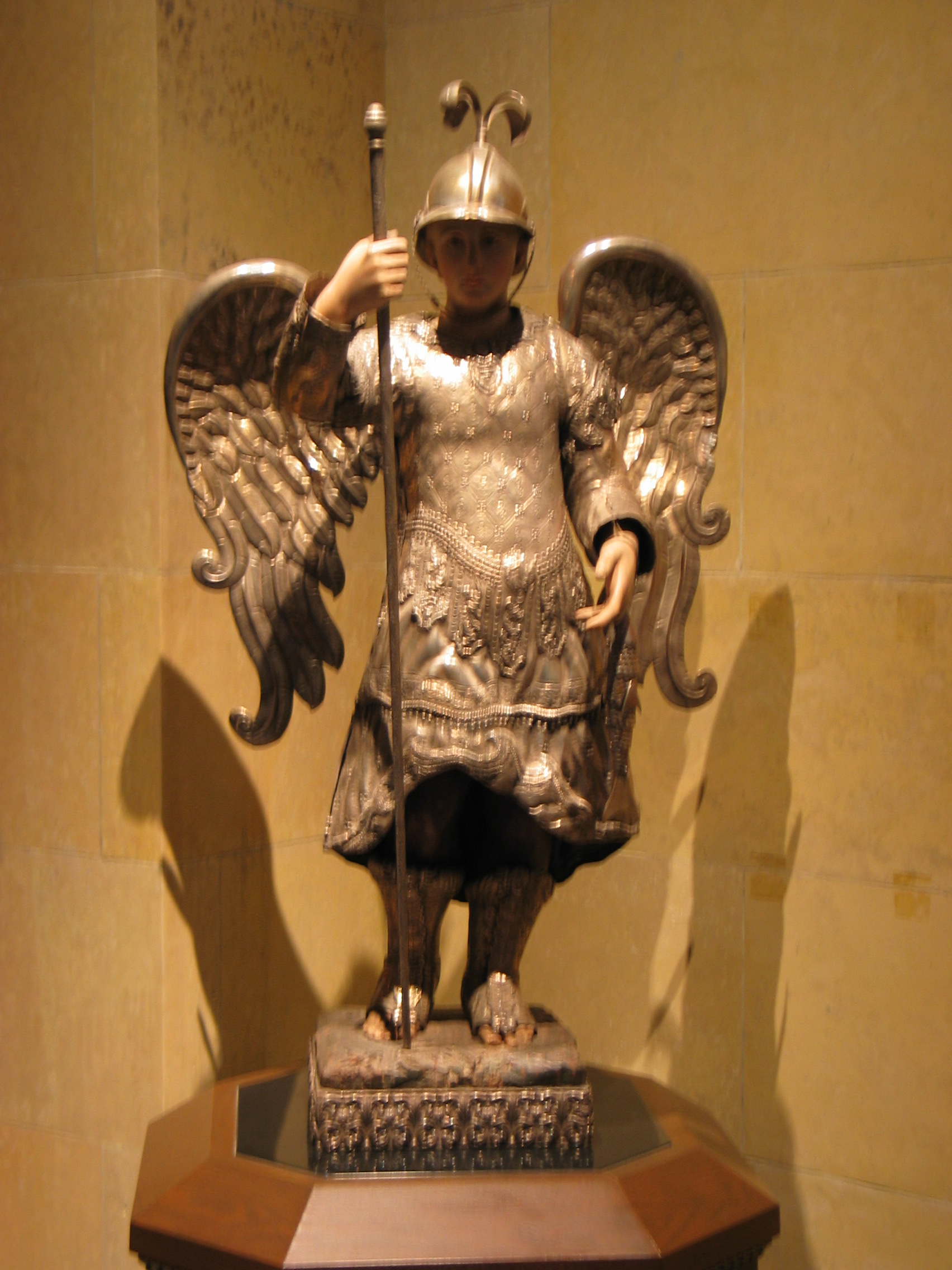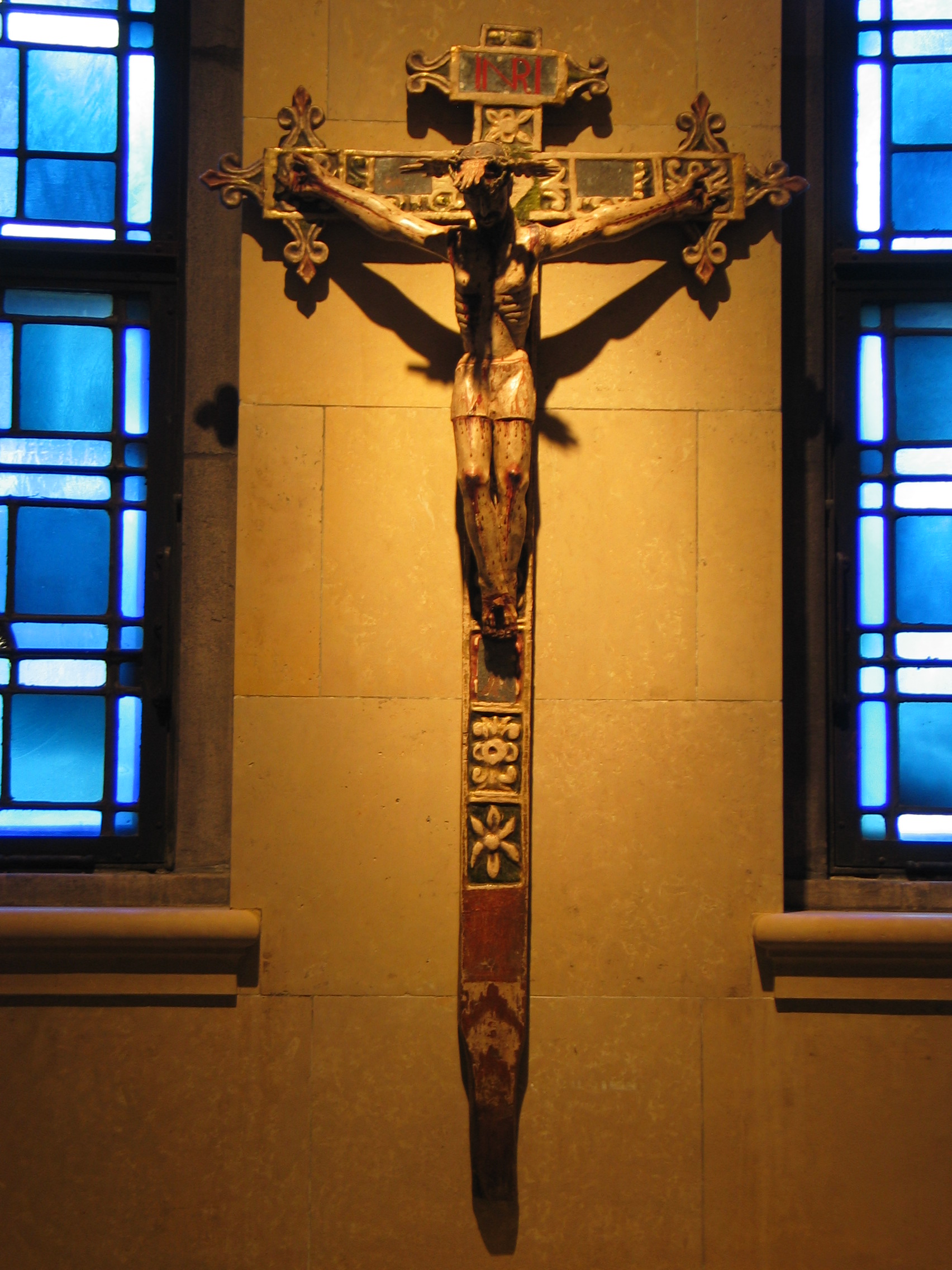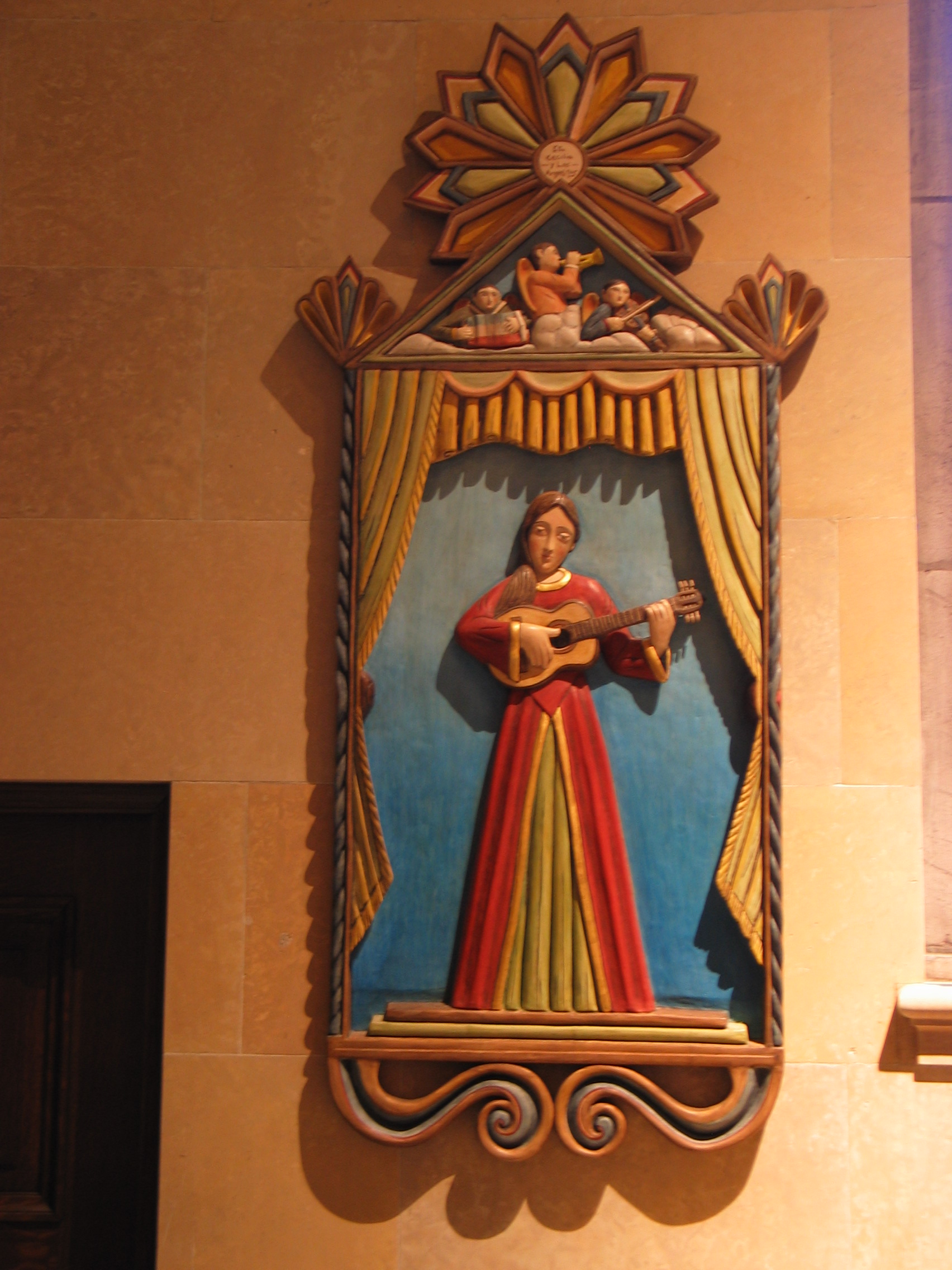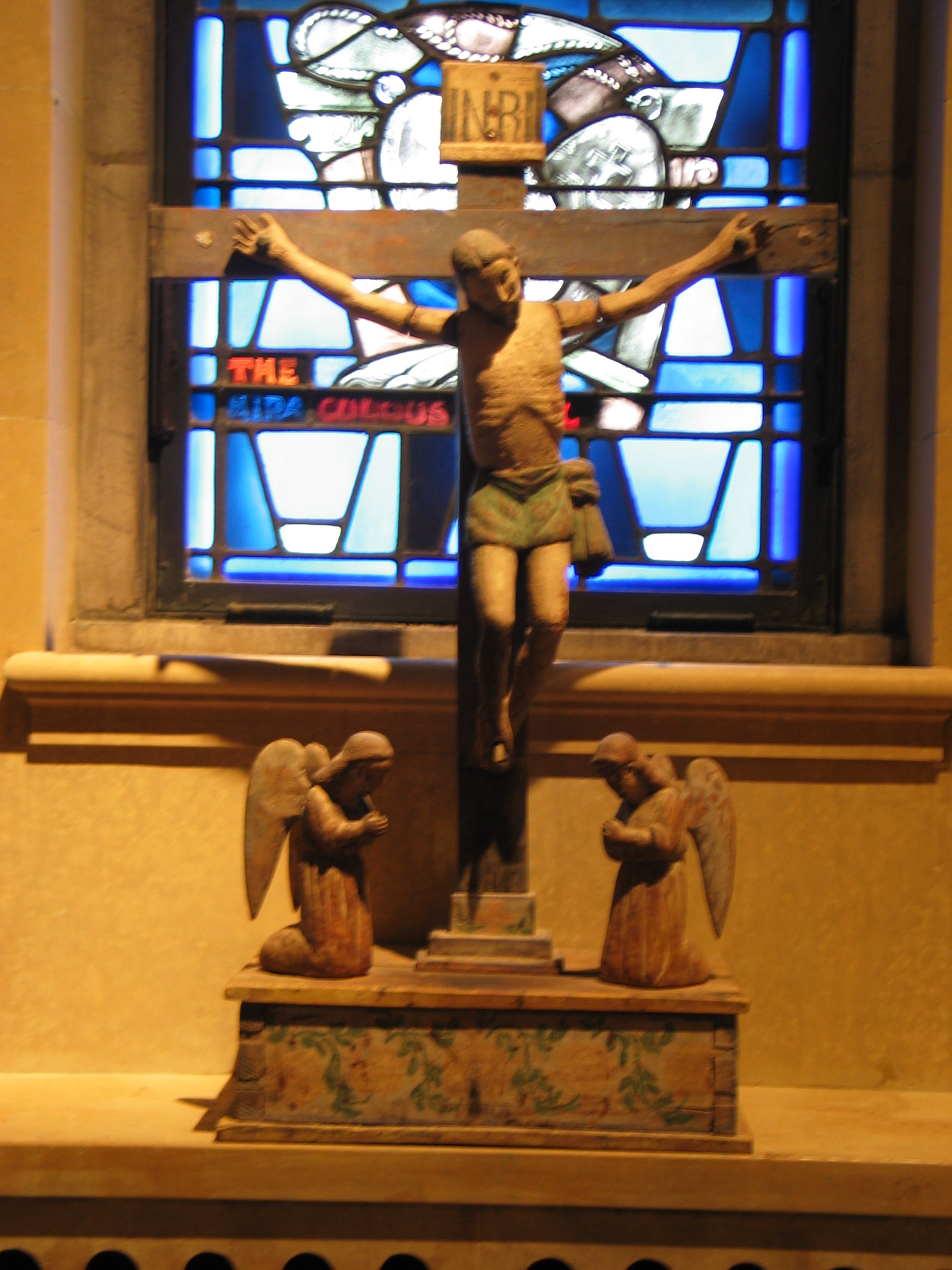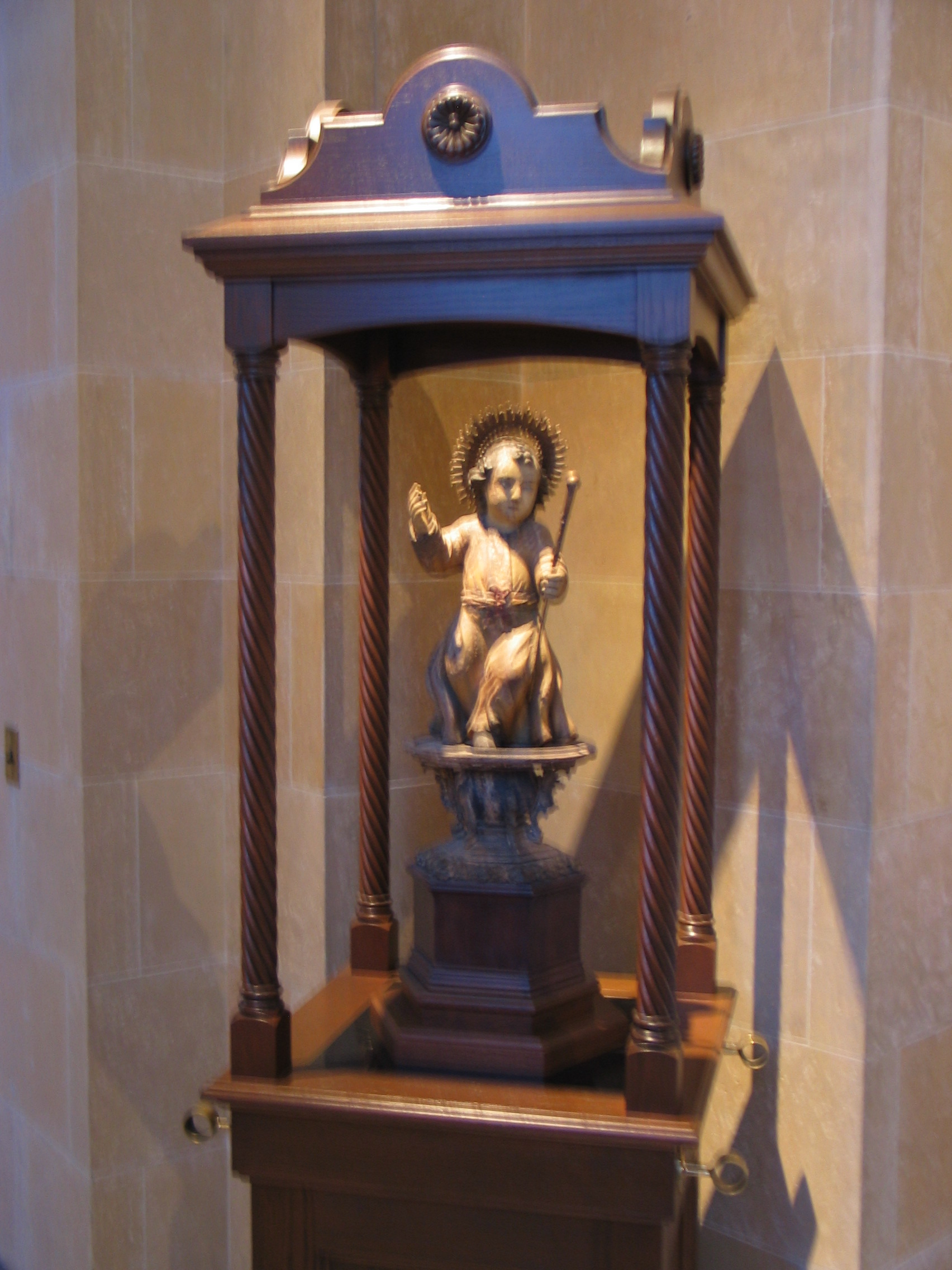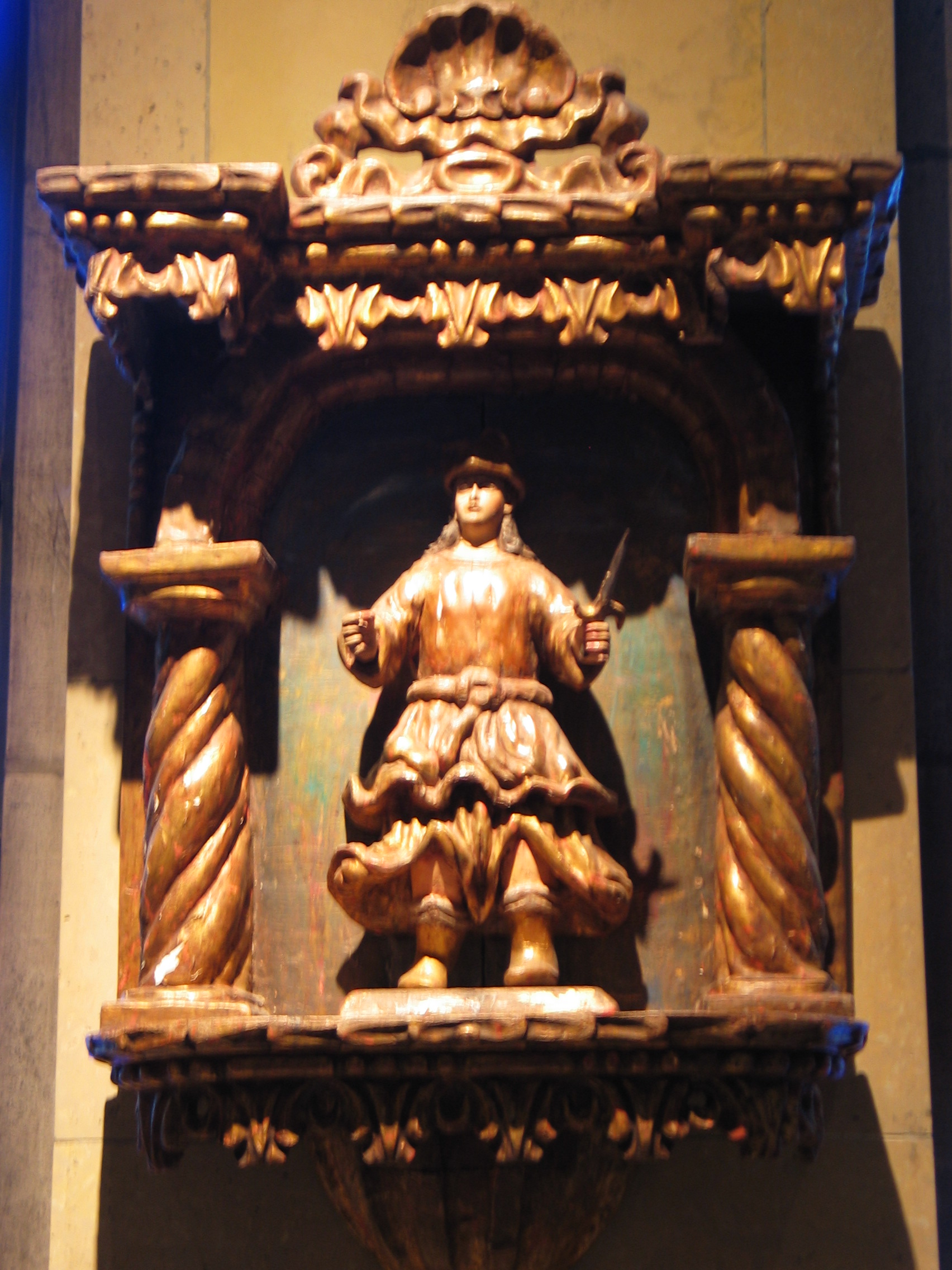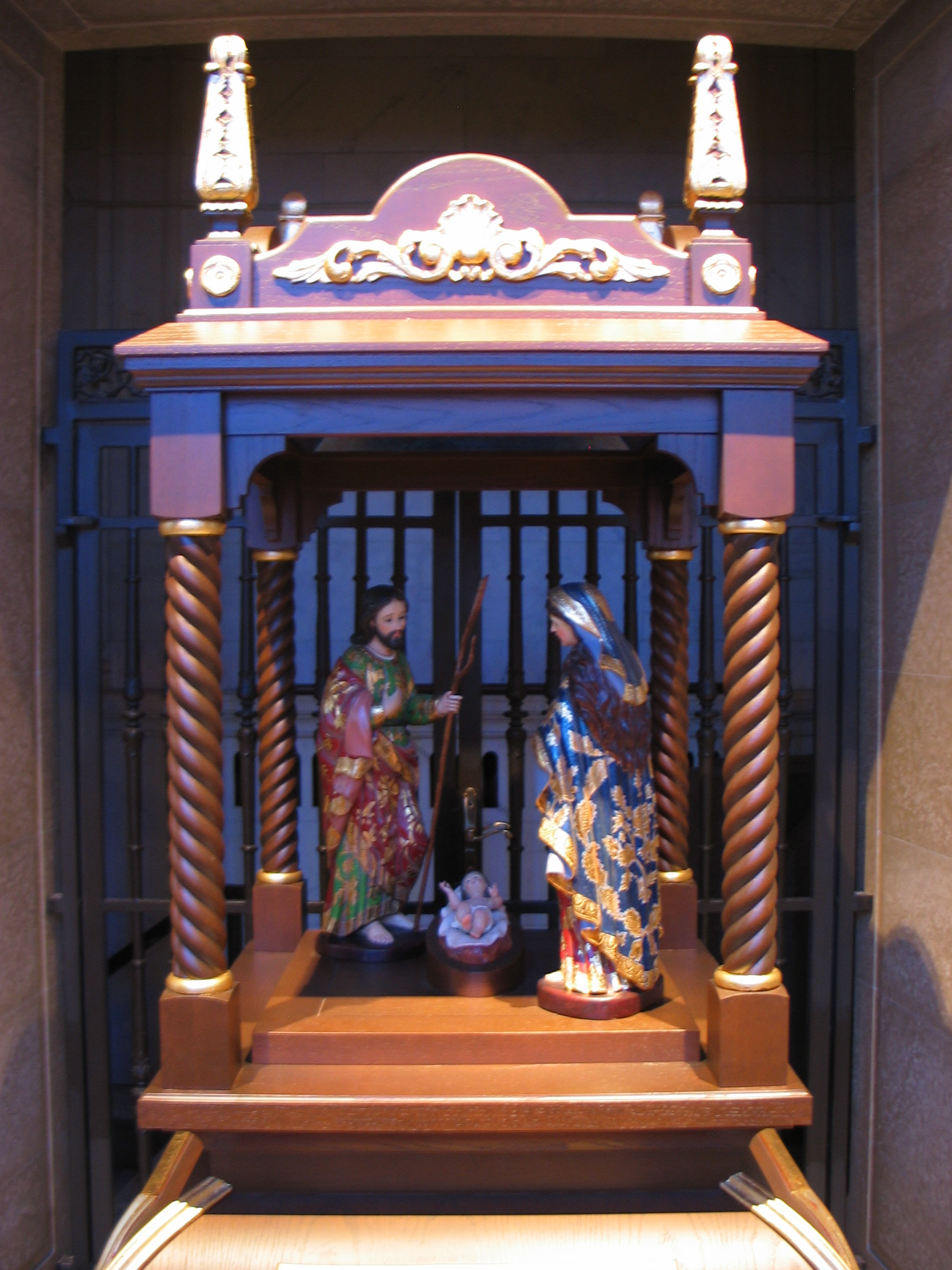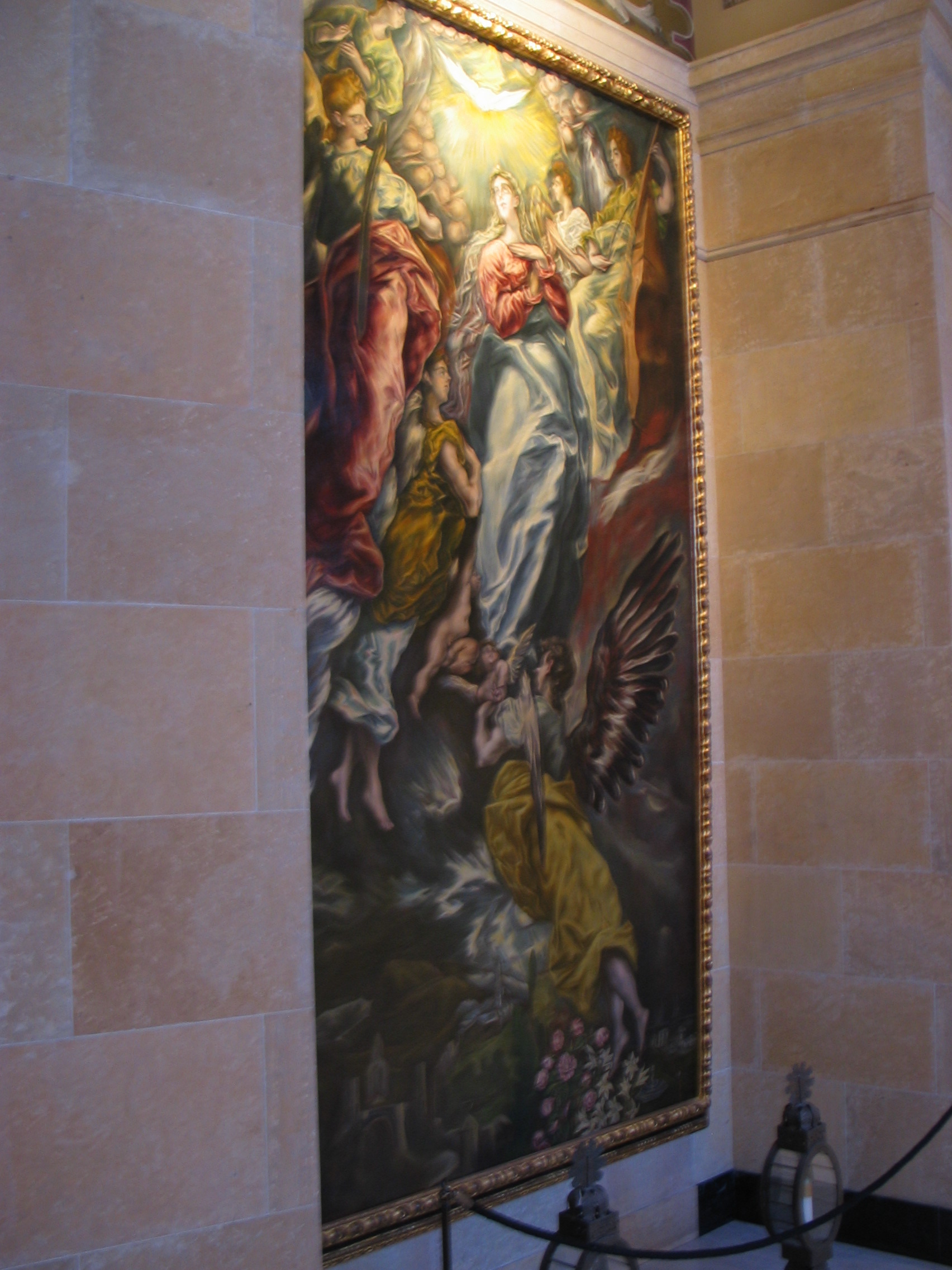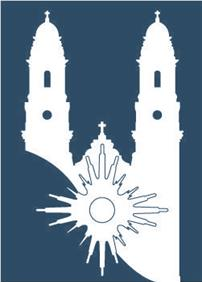Art at the Cathedral
Saint Cecilia Cathedral, in addition to its stained glass, sculptures, and paintings, is home to the Spanish Colonial Art collection.
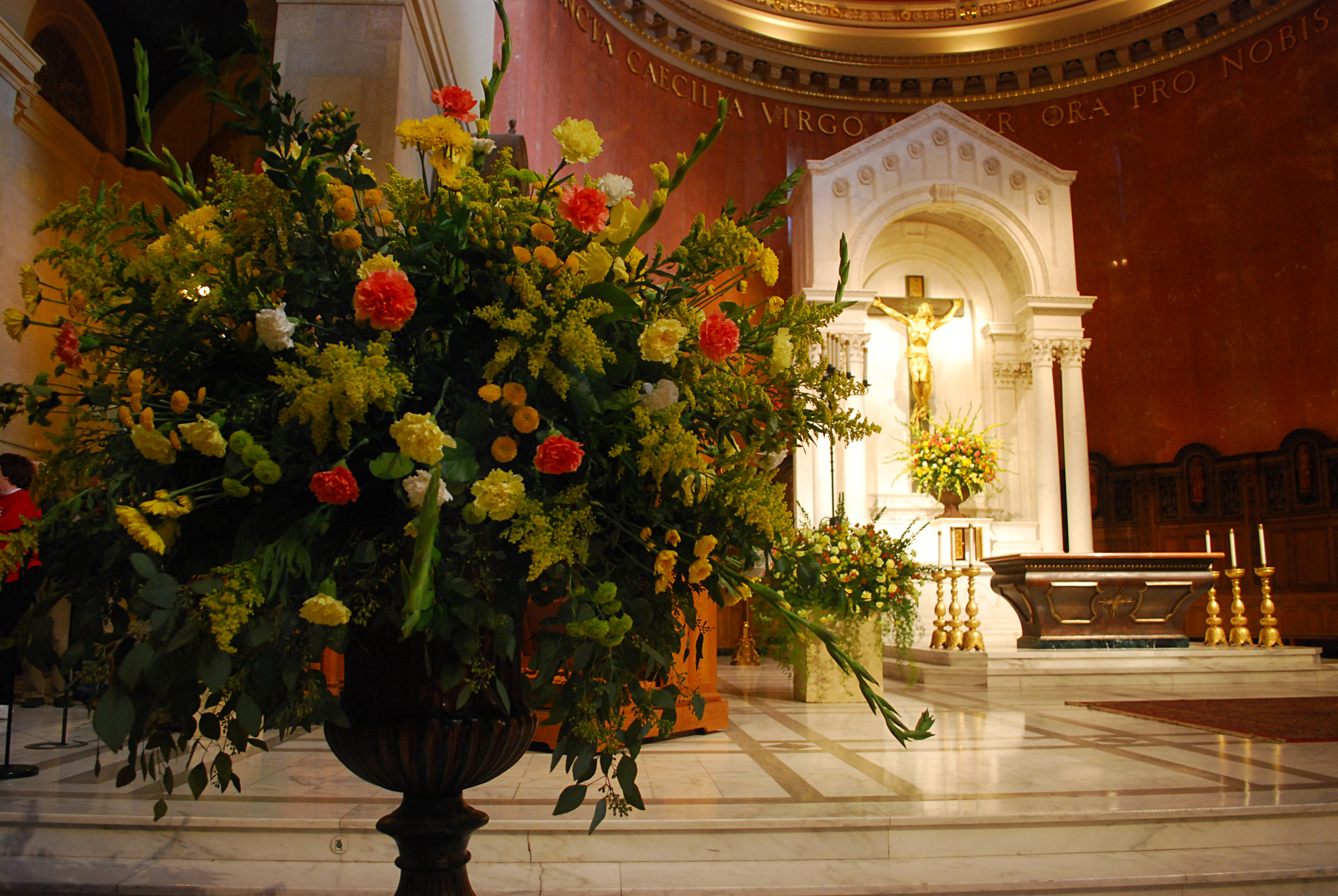
Saint Cecilia Cathedral, in addition to its stained glass, sculptures, and paintings, is home to the Spanish Colonial Art collection. These two dozen paintings, figures and statues originated in Mexico, Central America, and northern South America, particularly Peru where the School of Cuzco arose. These items are found in the East Ambulatory, behind the sanctuary, and in the Nash Chapel.
There are 52 stained glass windows throughout the Cathedral. The first 27 windows are the work of the Charles Connick Studios in Boston, Massachusetts. Charles Connick was the dean of stained glass work in the first half of the twentieth century and a champion for the revival of stained glass production in the manner of the medieval artists. The remainder of the windows are the work of Rambusch Decorating Company of New York which completed the interior decoration of the Cathedral in 1958.
These works of craftsmanship and art preach lessons of faith from the heights of the rose window and the eight clerestory “singing windows” to the intimacy of the apsial ambulatory and the simplicity of the sacristy windows.
Masterpiece sculpture works in wood, bronze and marble by the Moravian émigré Albin Polasek and his colleague William Hoppe are found throughout the Cathedral.
Above three doorways in the south ambulatory, two doorways in the north ambulatory and facing one another in the north entry are murals by the art deco master Hugo Ulhm depicting the beatified and canonized saints of North America in the nineteenth and early twentieth centuries.
At the cornice level in the ambulatories are illuminated lunettes with symbolic presentations of the seven gifts of the Holy Spirit – three on the south side and four on the north side. Also illuminated are the theological virtues given by the Holy Spirit who is at the northwest end. Opposite at the northeast end is Faith, Hope is at the southwest end as an anchor, and opposite at the southeast end is Charity, an inflamed heart.
